
February 2011
John Vincent Bellezza
Forward or backward in time and space, the Flight of the Khyung transcends conventional limitations to offer you the view beyond. Let not the chill of winter or the distractions of the moment thwart your move towards greater knowledge (and happiness). Pausing for just a few minutes, come away with this month’s Flight of the Khyung to ancient Tibet, a realm that always astounds and inspires.
Celebration of the great passing: A retrospective on Upper Tibet’s concourses of standing stones appended to temple-tombs
This issue focuses on one of the most distinctive monuments of the principal paleocultural zone of Upper Tibet: necropoli comprised of standing stones and mausolea. These ritual burial centers appeared across the southern half of the Changthang, from Ruthok in the west to Namru in the east. This expansive region is associated with that legendary kingdom of Tibetan literature, Zhang Zhung. The necropoli feature quadrate arrays of standing stones aligned in the cardinal directions or in the intermediate directions. These concourses contain between 100 and 3000 miniature stelae or menhirs. Just west of each field of standing stones is an above-ground building aligned in the same manner. These specially built structures functioned as mortuary temples and tombs. Where still relatively intact, they contain smallish chambers fully enclosed by massive masonry walls.
My dating of human remains from one of these necropoli to the 7th century BCE may well provide some indication as to their chronology. The human bones that were AMS tested came from a subterranean tomb situated between two complexes of standing stones and mausolea. While the date of this burial is not necessarily applicable to the necropolis in its entirety, it does reveal that the land on which it was founded had funerary associations by the first third of the first millennium BCE. As for the period in which these elaborate burial complexes were abandoned, a date of no later than 1000 CE can be posited. Around that time, Buddhism became the dominant religious force in Upper Tibet, leading no doubt to the elimination of more conspicuous aspects of the pre-Buddhist religious heritage. The actual construction of necropoli is not likely to have continued after the annexation of Upper Tibet by the Purgyal emperors of Central Tibet. Central Tibet had a very different ensemble of burial monuments and, with the spread of its customs and language westward, huge assimilative pressures were exerted on upland cultural traditions.
The alignment of the standing stones and buildings of Upper Tibetan necropoli hints at a high level of astronomical discernment. At minimum, the rising and setting of the sun over the course of the year was plotted at these sites. More complex lunar and sidereal calculations may also be incumbent in the spatial arrangements of the necropoli, but this is difficult to establish in any scientifically verifiable manner. In addition to the erected stones, many sites have long slabs of stone embedded in the ground edgewise to form a grid pattern covering as much as 800 m². The pillars (the part above the surface) range in height from 15 cm to 1.3 m and come in many different shapes and types of stones. Tabular specimens invariably have their two long sides facing north and south.
The robustly built temple-tombs range from just 3 m in length to more than 60m long. As none of the roofs have survived intact we can only guess at how tall these impressive structures originally were. Heights of 5 m are still reached by some walls, and it is possible that certain mausolea may have been significantly taller than this. The temple-tombs were beautifully constructed with coursed-rubble walls, the larger examples of which are interspersed with thin bond-stones. The inner walls surrounding the burial chambers (there are between one and five in each structure) are often composed of finer masonry. The walls enveloping the burial chambers can be 2 m or more in thickness.
Given the intricate architecture of the Upper Tibetan necropoli, we can surmise that a complex range of ritual activities were once conducted at them. Some of the Tibetan archaic funerary texts I have worked on may provide an indication as to the nature of these functions, but this is still speculative. The texts do indeed mention long-stones (rdo-ring) and erected stone registers (tho) used in the mystic reconditioning of the souls of the deceased, as a prelude to their entry into the ancestral afterlife. However, the funerary texts furnish only vague geographic signposts and describe very little in the way of mortuary architecture. An Upper Tibetan oral tradition that associates each of the standing stones at a site with a stricken warrior of yore may have some bearing on their actual function. Clearly, very significant resources and manpower went into the construction of the necropoli, projects that must have required the participation of a large cross-section of the local population. Furthermore, the use and maintenance of these burial centers could only have been a labor intensive endeavor.
I have written quite extensively on the place of Upper Tibetan necropoli in the broader Eurasian cultural and historical context. Stone slabs erected as pillars and as elements in other types of mortuary structures can be traced in the steppes to the Okunev culture and proto-Mongol strains of the third millennium BCE. Circa 1200 BCE, pre-Scythic peoples started to raise menhirs at their burial sites, as did the Tashtyk culture of southern Siberia more than 1000 years later. Finally, in the 5th to 7th centuries CE, Turkic tribes created necropoli similar in a number of ways to the Upper Tibetan types. As is well established, during Tibet’s imperial period there were many interactions between the highlanders of the Plateau and Turkic groups. Moreover, Tibetan textual references strongly suggest that there were cultural ties to Turko-Mongolian tribes even before the 7th century CE.
It is also worth noting that the funerary stelae of Upper Tibet and the steppes may have acted as cultural inspiration for the ancient pillars of the Chinese known as bei. The bei were a dominant funerary monument of the Han, Wei and Jin dynasties, postdating the rise of Inner Asian prototypes by many centuries.
Nowhere else in the Tibet were funerary pillars customarily erected, at least in the numbers and configurations found in Upper Tibet. These differences in the archaeological record buttress traditional Tibetan historical accounts, which hold that in pre-imperial times the Plateau was divided into a number of tribal states, each with its own language.
The smaller stelae associated with the Upper Tibetan context seem to be an environmental adaptation to the extremely harsh high altitude conditions. It does not appear that highlanders had the luxury to raise huge standing stones, as did the Scytho-Siberians. However, what they lack in size was compensated for by sheer numbers, making the Upper Tibetan necropoli one of ancient Eurasia’s greatest funerary monuments.
The images featured below are all from expeditions conducted between 1995 and 2000. Some of these images have never been published, while others were published in black & white in rather obscure monographs and papers.

Fig. 1: A partial view of the concourse of stones at a site in the central Changthang. It is situated on a wide bench above a major river valley.
The above picture was taken at the height of the short Changthang summer in 1995. Back then I did not quite know what I had turned up, ushering in 15 years of subsequent research and exploration. Note the taller long-stones to the east of the concourse, a morphological trait of some necropoli. This site appears to be one of those described by the Russian scholar George Roerich in his book “Trails to Inmost Asia”. Other sites discovered by George Roerich in 1927 are revisited in my soon-to-be published online two-volume work, “Antiquities of Zhang Zhung”. In fact, you can already find it staged at thlib.org/Bellezza. From the time of Roerich’s Central Asiatic Expedition and my expeditions of the 1990s and 2000s, Upper Tibet’s necropoli were entirely forgotten (as were so many of her other ancient monuments)

Fig. 2: A dense array of standing stones with the faint remains of an appended edifice in the foreground. Discovered in 1999, this site is located in northwestern Tibet. The field of standing stones is in surprisingly good condition

Fig. 3: Another example of a smaller Upper Tibetan necropolis; this one documented for the first time in 2000. Known as ‘Pillars of the Sky’, this western Changthang funerary site enjoys spacious views to the east, as do many of its kind. Note the appended edifice on the right side of the image. It has been reduced to a rocky tumulus
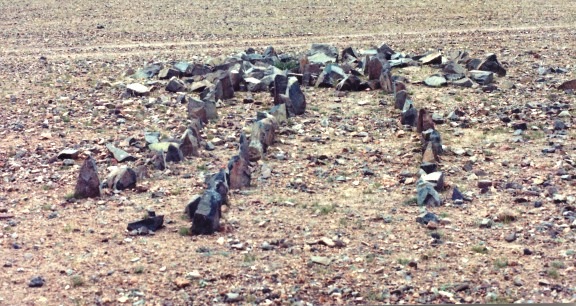
Fig. 4: An especially small example of a concourse of standing stones photographed in 1999. It is comprised of just three short rows of stelae, and while there may possibly have been one or two additional rows originally, this was a minor site. Very little of the diminutive appended temple-tomb has survived
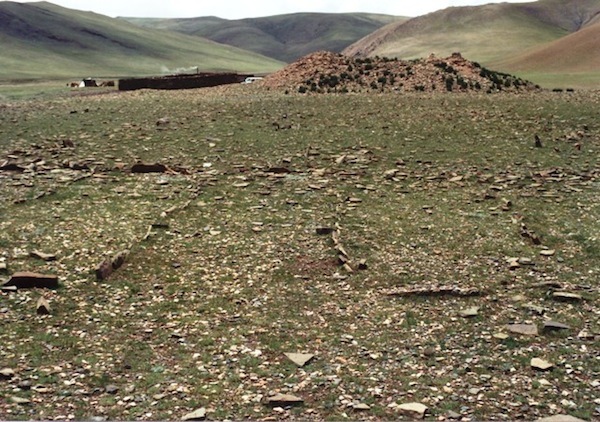
Fig. 5: On the other end of the spectrum is a gigantic example named ‘Ruins of Onager Grass Confluence’.
The ‘Ruins of Onager Grass Confluence’ was first documented in 2000. Sadly, about 30 years ago, many of the standing stones were pulled out of the ground and the temple-tomb largely dismantled by local herders, who used them to build houses and corrals. To the left of the tumulus (the remains of the mausoleum) is one of the many residences built with the pilfered stones. Only about 100 broken long-stones remain in a concourse that may have originally contained at least 3000 of them. In the foreground are traces of a slab-wall network. Ruins of Onager Grass Confluence was one of the largest necropoli in Upper Tibet and its destruction is a huge blow to the archaeological and cultural integrity of Tibet
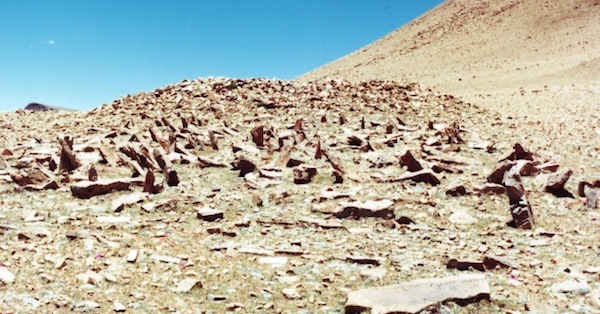
Fig. 6: A moderately sized necropolis located on the spur of a mountain in the central Changthang.
Most of the long-stones at the above site are in situ but they have collapsed or are inclined at radical angles. The slope upon which this monument was built has proven inherently less stable than those constructed on open plains. There are few integral wall fragments left in the temple-tomb. In the vicinity is the ruin of an all-stone corbelled temple, which according to local luminaries, dates to the time of Zhang Zhung. Insomuch as the necropolis and temple were active in the same time period, they represent milestones in the lifecycle of contemporaries in ancient Upper Tibet. I documented these sites on the 5 ½-month long Changthang Circuit Expedition in 1999.
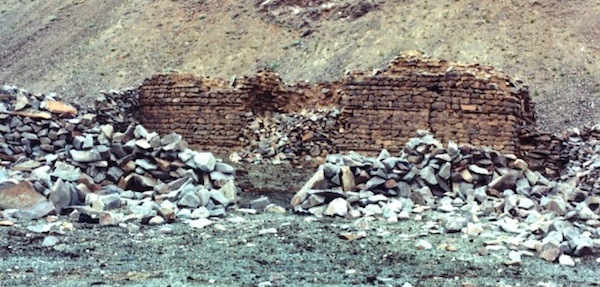
Fig. 7: A large temple-tomb converted to pastoral usage in premodern times. All pillars that stood in front of the edifice were stripped away long ago.
The above necropolis is situated in the western Changthang. The site hosts a variety of pre-Buddhist ceremonial monuments, as well as the ruined residence of local chieftains. Note the courses of thin bond-stones in the east wall of the temple-tomb. This site was discovered on the CCE in 1999.
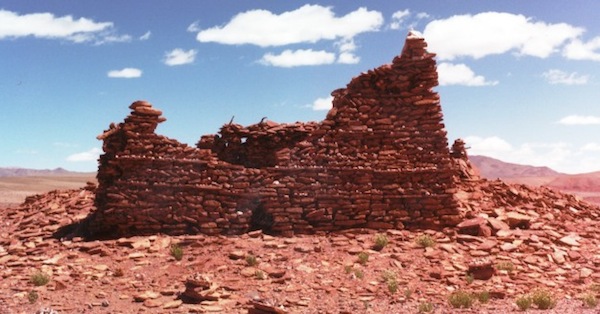
Fig. 8: A finely designed temple-tomb in the western Changthang, measuring 16 m (north-south) by 7.2 m (east-west).
The above site was also documented in 1999. Note the way in which the outer walls taper inwards towards the top, a conventional architectonic feature of larger structures of this type. While tapering walls are common in the traditional architecture of Central Tibet, in Upper Tibet it is only regularly represented in its necropoli. This site is associated with the legendary heroine Atak Lumo (A-stag klu-mo) of the Gesar epic. Virtually none of the stones that stood in the various complexes of the site are still extant.
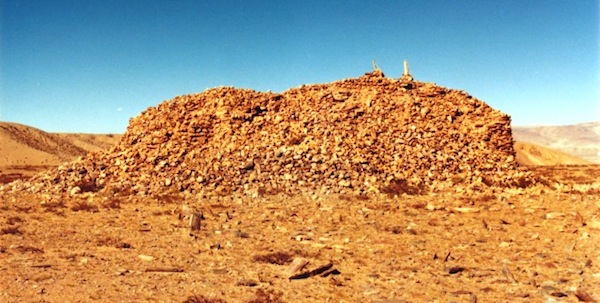
Fig. 9: The temple-tomb (17 m x 10.5 m) of another site in western Tibet with some of the standing stones in the foreground. Not many pillars are still planted in the ground of this larger necropolis. I first documented it in 1999 but conducted another survey in the mid-2000s
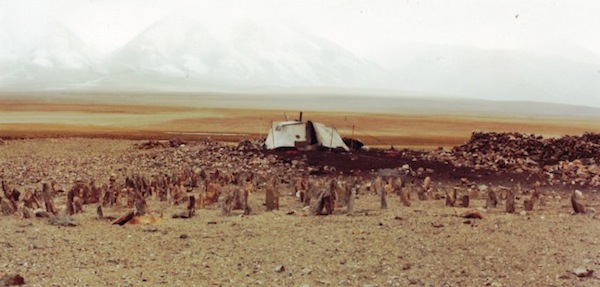
Fig. 10: The pillars of a necropolis named ‘Red House’ located in the western Changthang.
The above site was also converted to pastoral use, which has had an adverse impact on its preservation. None of the temple-tomb has endured. The local herders are unaware that, in actuality, this is a pre-Buddhist funerary site. Had they known they would never have settled here. The average drokpa of Upper Tibet avoids places of the dead. Possibly, this taboo can be harnessed in the conservation of ancient monuments. I found Red House in 1999.
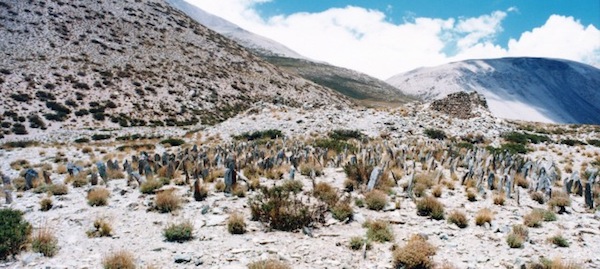
Fig. 11: The so-called ‘Tower Complex’ at Yul Khambu. This temple-tomb measures 14.5 m (east-west) by 22 (north-south) and the concourse of standing stones 25 m (east-west) by 12.5 m (north-south). More than half of the estimated 800 stelae in this complex are still standing. Tower Complex is one of six such installations at Yul Khambu, most of which are even larger
The spectacular necropolis at Yul Khambu is probably my single most impressive archaeological discovery in Upper Tibet. I ran across it in 1999 when collecting information in a herder’s camp in the basin below the site. I was told that the ruins of a ‘monastery’ and ‘nunnery’ were to be found high up on the slopes. It was towards the end of a long expedition and late in the day when I arrived at the camp. What’s more, I was not devoting much time to Buddhist sites. Still, I thought, ‘you never know’, and hiked up to Yul Khambu on my own. I was astounded by what I saw, an archaeological wonder trumpeting the sophistication and might of the ancient Upper Tibetans long before Buddhism took root. Even more exciting for me was to gradually see how the necropoli marked out key geographic and economic regions of the Tibetan upland, the constituent parts of an archaic cultural order with advanced technological capabilities. I suppose if I had been more media savvy, this discovery could have been parlayed into an international sensation. However, my low profile approach was appreciated by all concerned, permitting me to continue my explorations unimpeded. To this day, Yul Khambu and many other ancient sites I have documented are known only to those like yourself who have a real interest in things Tibetan.
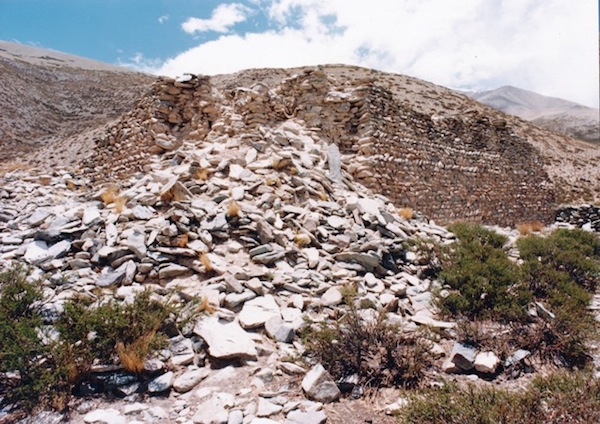
Fig. 12: The temple-tomb of the Tower complex. Within its extremely thick walls are two burial chambers.
At one time, these burial chambers were cocooned in this masonry. In addition to the interment of what could only have been individuals of the highest social status, commemorative rituals may well have been carried out at the mausoleum over a long period of time. Try to imagine this structure perhaps one or two meters taller and with an all-stone corbelled flat roof. The walls are liable to have been covered in a clay-based plaster, which in turn may have been painted with bright mineral pigments. Pieces of clear quartz and red sandstone scattered around the site were possibly used to embellish the structure. The rituals carried out here revolved around paying homage to the dead. These socially exalted dead may have been seen as entities exerting a salubrious influence on the living and their economic and political undertakings
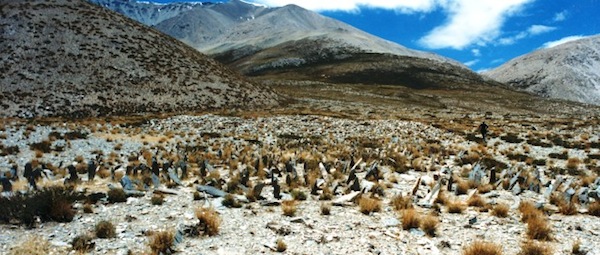
Fig. 13: Another one of the six great complexes at Yul Khambu. This image, like others of the site shown in this newsletter, was taken on a subsequent visit in the early 2000s. For scale, note the individual standing to the right of the ruined temple-tomb. In total, Yul Khambu boasted around 10,000 pillars. Amazingly, about 6000 are still standing. Also at the site is a zone of burial pits covering some 10,000 m²

Fig. 14: An almost leveled temple-tomb at Yul Khambu more than 60 m in length. The raising of such structures was a major engineering feat made more remarkable by the fact that most of the ancient population (as in more recent times) resided in portable shelters, such as the fabled black yak hair tent (sbra-nag).
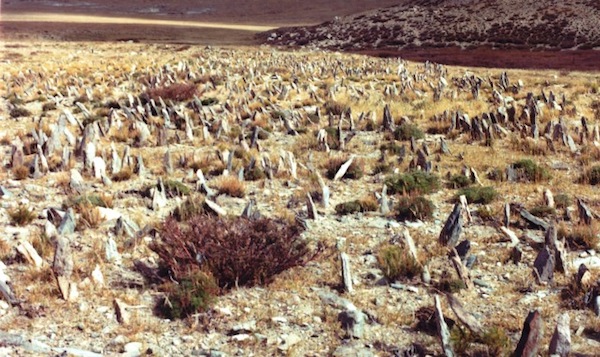
Fig. 15: Some of the many pillars in one of the lower concourses at Yul Khambu. Originally there were around 3000 stones in this one array. A veritable forest of standing stones, it is now overgrown with the bush known as drama (gra-ma) and other vegetation
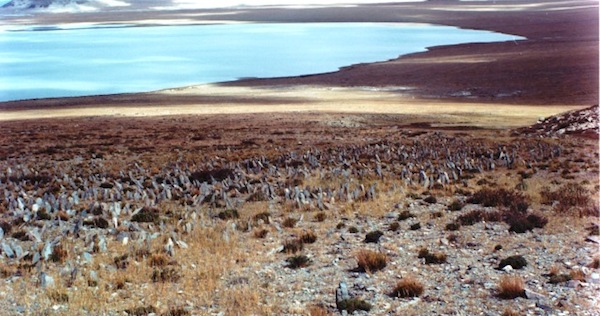
Fig. 16: Another image of the concourse of standing stones in fig. 15. Below the site is one of the many thousands of lakes on the Changthang.
This particular lake is considered sacred by present-day residents. The role that this lake or the mountain range to the west of the site might have played in the ritual activities of Yul Khambu is not clear. Archaic funerary texts say that deities of sacred lakes and mountains functioned as allies of the dead, helping in their passage to the otherworld. It is not unreasonable to contemplate that some 14 to 20 or more centuries ago, this eschatological theme was known to the builders and users of Yul Khambu.
A really big western Tibetan fibula
Most of the so-called fibulae manufactured in ancient western Tibet are between 3 cm and 18 cm in diameter. However, larger ones do occasionally come to light. One of these is in the Shang Nyima collection. This specimen measures about 25 cm across. It dates to the early historic period and perhaps more specifically to the 9th or 10th century CE (pictured below).
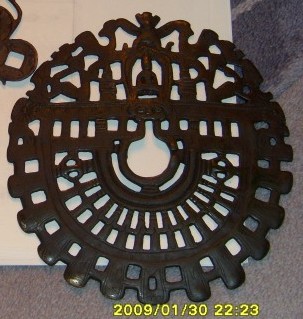
Fig. 17: A giant western Tibetan fibula.
Unfortunately, the image quality is poor, but the major motifs of this intricately designed copper alloy object are still discernable. In the uppermost position is the khyung or horned eagle of Tibet, a protector of religionists and totem of Zhang Zhung. On either side of the khyung, along the outer edge of the fibula, there are three birds, the uppermost pair of which is peacocks. These six birds may possibly represent the clans of western Tibet, a tradition that Giuseppe Tucci wrote about. Directly below the birds is a pair of lions, symbol of power and sovereignty. Between the six birds of the outer edge of the fibula are two more birds and two tiered shrines. These shrines flank a central Buddha figure seated in meditation. Directly below the Buddha is the head of the tsipata, a mythic water monster and protector of Tibetan religion. Flanking the central ring are the halves of a ritual thunderbolt, the symbol par excellence of Vajrayana Buddhism.